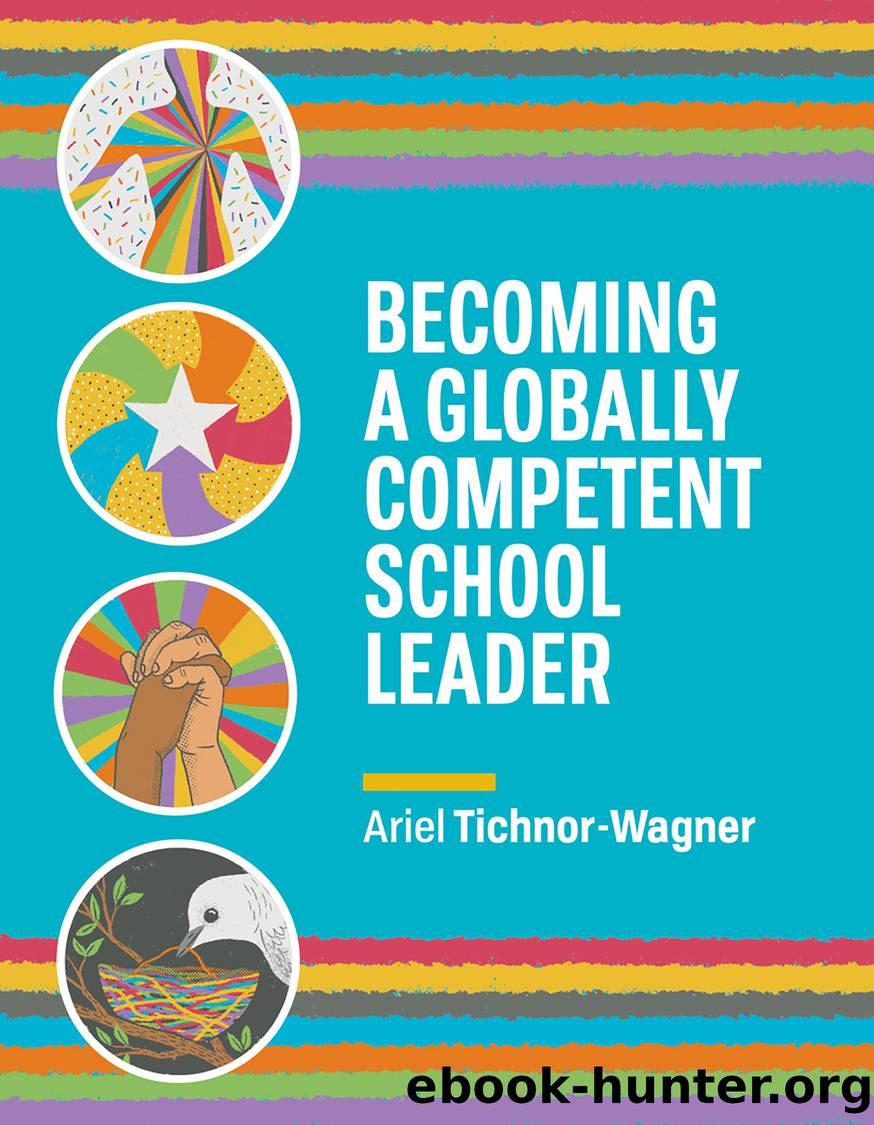Becoming a Globally Competent School Leader by Tichnor-Wagner Ariel;

Author:Tichnor-Wagner, Ariel; [Tichnor-Wagner, Ariel]
Language: eng
Format: epub
Publisher: Association for Supervision & Curriculum Development
Published: 2020-01-02T00:00:00+00:00
Show the Love
Educating stakeholders about the value of global competence need not beâand should not beâdidactic. It's important to build two-way communication channels to show you care. True caring occurs when the needs of the cared-for are listened to and addressed (Noddings, 1984). Therefore, communication should focus on listening to people who may be dissatisfied with or concerned about global education and determining how to effectively respond to those concerns. The active listening skills we teach students as they engage in intercultural conversations apply equally to adults. Active listening involves asking thoughtful questions based on what you hear, confirming and clarifying what you heard before sharing your response, and recognizing perspectives with which you might not agree. When someone is talking, you shouldn't be silently planning your response or interrupting them. Instead, you should be immersed in what that person is saying.
Engage in ongoing dialogue. Nancy Gibbs, former editor-in-chief for TIME, wrote, "Just giving people more information, whether about climate change or crime rates or vaccines, does not pave a road to common ground" (2018, para. 8). Telling stakeholders that global competence is importantâeven providing the data to go with itâmay not be enough to convince them to support this work. However, engaging in an ongoing conversation that gives stakeholders an opportunity to share their understandings and beliefs about global learning may be a step toward changing negative perceptions. Create an open dialogue with community members to address concerns; don't wait until a parent complains about a project his or her child is doing on world religions or a petition starts circulating about ending the Chinese immersion program. Begin dialogues about global teaching and learning early and engage in them often.
Provide multiple access points for parents and community members. Community meetings create a space for these initial conversations to occur, and it's a good idea to structure those meetings so you succinctly explain the what, how, and why of your global learning objectives and leave plenty of time for questions and answers. As an administrator in a rural district shared, "Community meetings definitely gave us a step up because people were involved. They had the opportunity to ask questions and have their concerns validated or squelched. They felt like they knew what was going to take place. I think it was because of that very thoughtful planning of implementation that we encountered little resistance." Hold meetings several times in different locations during the year. Keep in mind that some places, such as community centers, might make it easier for parents to attend. For those who cannot attend, record the meetings and post the videos online so families can watch at their convenience. (One principal shared with me how she intentionally presented at school board meetings because she knew those meetings were recorded and broadcast on TV for families to see.) This will help spread the information and allow those who can't attend the meetings in person to still benefit from them.
Opening your door for one-on-one conversations is another way to get on the same page as parents and staff members who may be reticent to global efforts.
Download
This site does not store any files on its server. We only index and link to content provided by other sites. Please contact the content providers to delete copyright contents if any and email us, we'll remove relevant links or contents immediately.
Macmillan Primary Grammar 2 Pupil's Book by Unknown(388)
Figuring Out Fluency in Mathematics Teaching and Learning, Grades K-8 by Jennifer M. Bay-Williams & John J. SanGiovanni(355)
The Principal's Guide to Curriculum Leadership by Sorenson Richard D.;Goldsmith Lloyd M.;Mendez Zulma Y.;Maxwell Karen T.;(282)
English Grammar Practice--The Noun by Roxana Nastase(241)
Learning from Accidents 3rd ed by Trevor Kletz (2001)(238)
Harnessing Technology for Deeper Learning by Scott McLeod(229)
Text-Dependent Questions, Grades K-5 by Douglas Fisher & Nancy Frey & Heather Anderson & Marisol Thayre(216)
A Guide to Curriculum Mapping by Hale Janet A.;(215)
English Language Program Administration by Unknown(205)
How to Do Everything with Google Tools by Unknown(199)
Deep Change Leadership by Reeves Douglas;(198)
The Grammar Teacher's Activity-a-Day by Jack Umstatter(186)
The Power of SMART Goals by Conzemius Anne;O'Neill Jan; & Anne Conzemius(184)
Aligning and Balancing the Standards-Based Curriculum by Squires David A.;(164)
Beyond the RTI Pyramid by Bender William N.;(163)
Using Data to Close the Achievement Gap by Johnson Ruth S.;(159)
Differentiated Instructional Strategies for the Block Schedule by Gregory Gayle H.;Herndon Lynne E.; & Lynne E. Herndon(157)
Using Equity Audits to Create Equitable and Excellent Schools by Skrla Linda E.;McKenzie Kathryn B.;Scheurich James Joseph;(154)
You've Got to Reach Them to Teach Them by Schreck Mary Kim; & Schreck(144)
